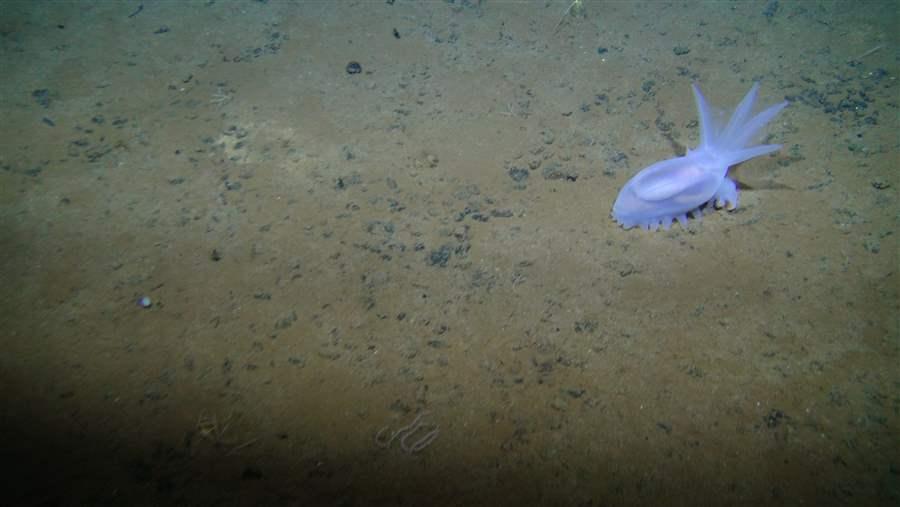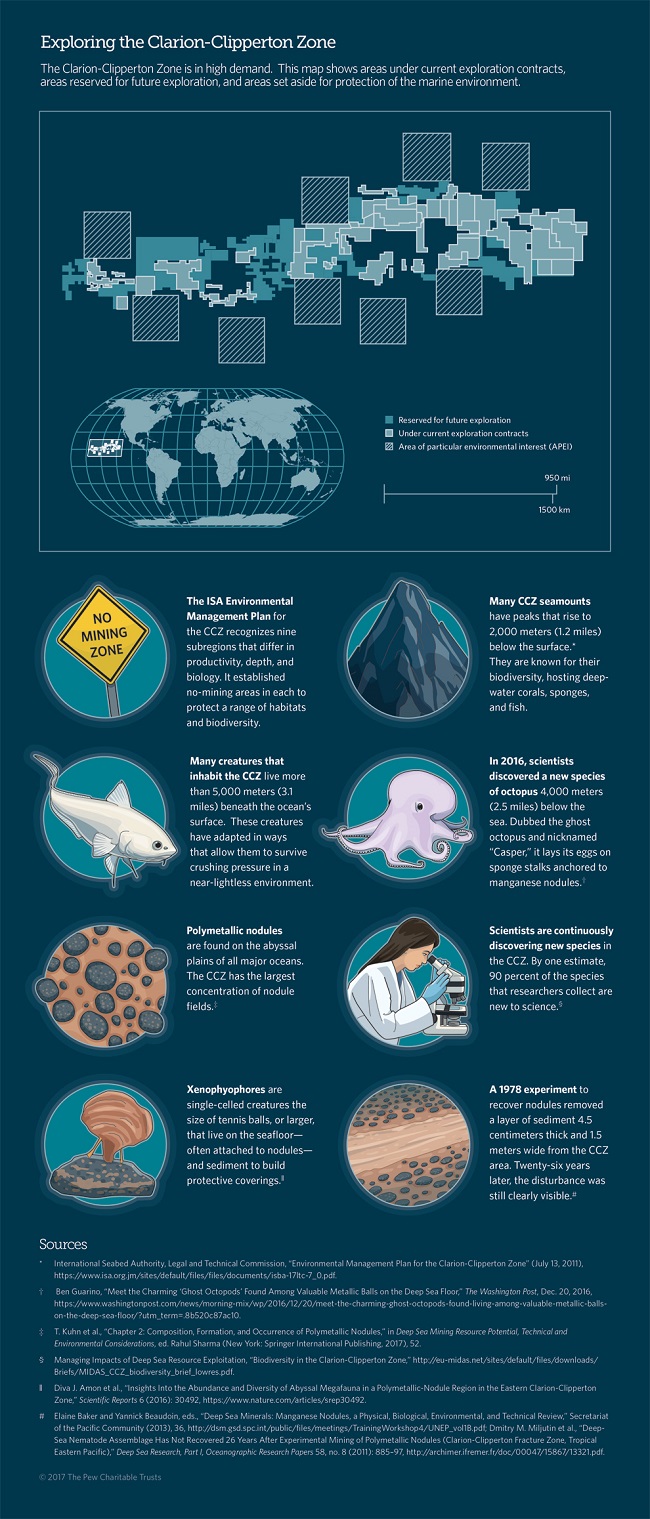The Clarion-Clipperton Zone
Valuable minerals and many unusual species can be found on the eastern Pacific Ocean seafloor
Overview
The Clarion-Clipperton Zone (CCZ) spans 4.5 million square kilometers (1.7 million square miles) between Hawaii and Mexico, an abyssal plain as wide as the continental United States and punctuated by seamounts. Lying atop the muddy bottom or embedded just beneath it are trillions of potato-size polymetallic nodules. These rocklike deposits contain nickel, manganese, copper, zinc, cobalt, and other minerals.
At these depths—completely dark but for occasional flashes of bioluminescence—the nodules are often the only hard substrate on a seabed of soft clay, which makes them attractive homes for creatures in need of anchor or habitat. The sediment surrounding the nodules also harbors remarkably high biodiversity.
The International Seabed Authority (ISA), the organization responsible for writing the rules for mining in seabed areas beyond national jurisdictions, has awarded 16 exploration contracts to state sponsors and contractors allowing them to assess mining opportunities within the CCZ.
Mining the nodules would involve scraping off the top layer of the ocean floor, separating the nodules from the mud, using a giant tube to pump them to a surface ship, and returning the water and fine particles through another tube. Many marine scientists are concerned about the potential impacts of disturbing the seabed in this manner. Nodules form over millions of years and cannot be replaced in any meaningful way.1 And scientists are just beginning to study some of the array of species that live at these depths, from sponges and sea anemones to shrimps and octopods. Little is known about how far they range, how populations are connected, and what damage may be caused by the spread of sediment plumes and other effects of mining. Scientific monitoring of experimental dredge sites in deep-sea sediment has shown that decades after a site is disturbed, few if any communities of organisms have recovered.2
A broad consensus is emerging among scientists that the ISA should prohibit seabed mining in at least one-third of the Clarion-Clipperton Zone and put stringent rules in place where mining is permitted.
Endnotes
- C.L. Van Dover et al., “Biodiversity Loss From Deep-Sea Mining,” Nature Geoscience 10 (2017): 464–65, http://www.nature.com/ngeo/journal/v10/n7/full/ngeo2983.html.
- Daniel O.B. Jones et al., “Biological Responses to Disturbance From Simulated Deep-Sea Polymetallic Nodule Mining,” PloS ONE 12, no. 2 (2017): e0171750, https://doi.org/10.1371/journal.pone.0171750; Dmitry M. Miljutin et al., “Deep-Sea Nematode Assemblage Has Not Recovered 26 Years After Experimental Mining of Polymetallic Nodules (Clarion-Clipperton Fracture Zone, Tropical Eastern Pacific),” Deep Sea Research, Part I, Oceanographic Research Papers 58, no. 8 (2011): 885–97, http://archimer.ifremer.fr/doc/00047/15867/13321.pdf.








